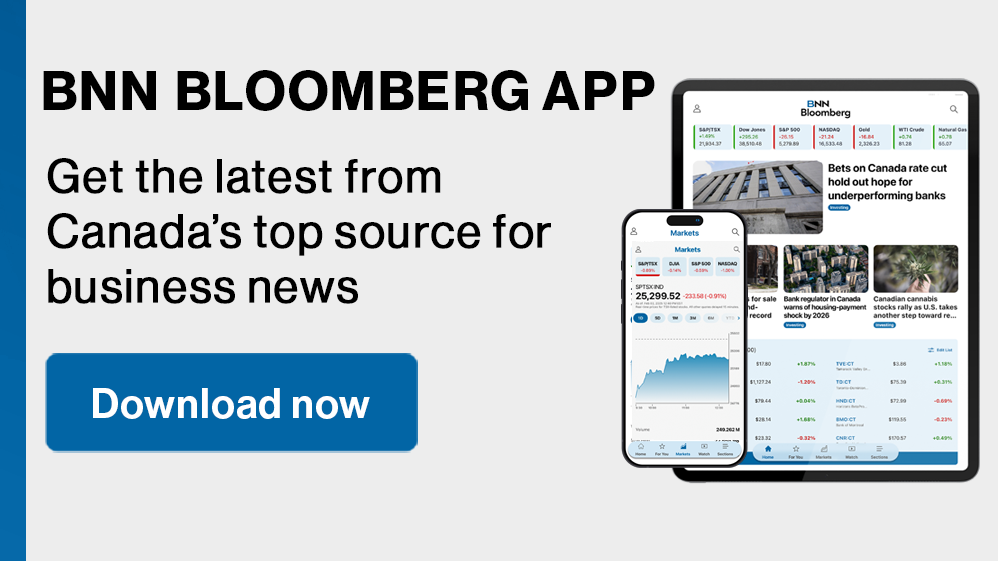(Bloomberg) -- Supply Lines is a daily newsletter that tracks global trade. Sign up here.
President Donald Trump said he would likely impose tariffs on automobile, semiconductor and pharmaceutical imports of around 25%, with an announcement coming as soon as April 2, a move that would dramatically widen the president’s trade war.
Trump has previously announced 25% tariffs on steel and aluminum that are set to take effect in March. Tuesday’s comments are his most detailed yet in specifying other sectors to be hit with fresh barriers if implemented.
“I probably will tell you that on April 2, but it’ll be in the neighborhood of 25%,” Trump told reporters at his Mar-a-Lago club when asked about his plan for auto tariffs.
Subscribe to the Bloomberg Daybreak podcast on Apple, Spotify or anywhere you listen.
Asked about similar levies on pharmaceutical drugs and semiconductor chips, the president said: “It’ll be 25% and higher, and it’ll go very substantially higher over a course of a year.” Trump said he wanted to give companies “time to come in” before announcing new import taxes.
“When they come into the United States and they have their plant or factory here there is no tariff, so we want to give them a little bit of a chance,” he said.
New levies on automobiles would have sweeping effects on the industry. The roughly 8 million passenger cars and light trucks brought into the US last year accounted for about half of US vehicle sales. European carmakers including Volkswagen AG and Asian companies including Hyundai Motor Co. would be among the most affected.
“European automakers may face challenges in maintaining market share, as most would struggle to pass such tariffs onto consumers or absorb the cost themselves given already thin margins,” said Rella Suskin, equity analyst at Morningstar.
Trump didn’t specify whether the measures would target specific countries or apply to all vehicles imported to the US. It’s also unclear whether cars made under a free trade agreement with Canada and Mexico would be spared from industry-specific duties, should they take effect. Trump previously threatened tariffs on Canada, Mexico and Colombia, only to pull back, raising the possibility his latest proposal is also a bargaining tool.
Stocks fell after markets opened Wednesday in New York amid fresh investor concern about a broader trade war. The S&P 500 slid from a record, while homebuilders sank. Shares of US automakers went down, led by Jeep owner Stellantis NV’s 2% decline. General Motors Co.’s stock slid 1% while Ford Motor Co. slipped less than 1%.
Most Exposed
While there are scant details about the latest tariff threat, it’s clear that the targets in Trump’s second trade war have broadened beyond China and will hit Asia in particular, according to Alicia Garcia Herrero, chief economist for the Asia Pacific region at Natixis SA.
“In relative terms, Trump 2.0 is clearly going to hit everybody,” she said. “Whoever thought that the rest of Asia outside of China may be a winner in this trade war was wrong.”
Globally, the countries most exposed to the most recent announcement include Mexico and South Korea, where exports of passenger cars to the US are equal to 2.4% and 1.8% of gross domestic product respectively, according to Bloomberg Economics. When it comes to chips, Malaysia and Singapore are among the most exposed.
Malaysia is the sixth largest exporter of semiconductors and exported a record 601 billion ringgit ($136 billion) of semiconductors in 2024. Trump’s announcement came only hours after Singapore Prime Minister Lawrence Wong announced plans to invest about S$1 billion ($744.8 million) for a new R&D semiconductor facility as part of his national budget.
Representative at Samsung Electronics Co. and Taiwan Semiconductor Manufacturing Co., Asia’s largest chipmakers, declined to comment.
Auto making powerhouses South Korea and Japan are also in the line of fire, particularly if recent levies are stacked with prior ones. Japan — where auto exports make up the largest chunk of outbound shipments and the US is the largest market — has already raised the issue with the White House.
A new 25% tariff would equate to a third of Toyota’s fiscal 2025 profit guidance and nearly half of Honda’s, Bloomberg Intelligence research shows.
Industry experts, lobby groups and executives have warned that steep new tariffs on the industry would have broad ripple effects, including higher prices for consumers and steep new costs for the industry.
Other countries have promised swift retaliation once Trump’s tariffs are applied and said they’d target politically sensitive goods that are made in Republican states.
The European Union’s top trade official is traveling to Washington this week to meet counterparts for a last-ditch effort to avoid getting hit by duties in April. Trump, however, has signaled there’s not much any one country can do to get out from the tariffs if he views the trading relationship as unbalanced.
Trump has also threatened other streams of tariffs, all part of an effort to rebalance the US’s trading relationships across the globe. The president has long accused other countries of ripping off the US and views import duties as a way to bring industries back to America and collect more revenue. Many economists say they would raise consumer prices for Americans and stymie the fight against inflation.
The president has said he would apply “reciprocal” levies on a country-by-country basis as soon as April, though specifics are still being determined. He has also threatened duties on some of the US’s biggest trading partners, such as a 10% rate already applied to China and 25% tariffs on Canada and Mexico that have been deferred until at least March 4. The measures would stack on top of one another, meaning that Mexican and Canadian producers in certain sectors could pay as many as three tariffs.
Altogether, Trump’s moves, if enacted, stand to remake supply chains and trade flows — and US prices. Tariffs are paid by importers and often passed onto consumers, though sometimes offset by price reductions abroad.
“It seems like no one is really getting through this unscathed,” said Katrina Ell, head of Asia Pacific economies at Moody’s Analytics. “I hope they’re using them as a negotiating tool. What we know from the past is that these tariffs don’t work as Trump wants them to work.”
--With assistance from Stephanie Lai, Jenny Leonard, Philip J. Heijmans, Edwin Chan, Ryan Beene, Katia Dmitrieva, Malcolm Scott and Brendan Murray.
(Updates with US markets, auto analyst reaction starting in seventh paragraph.)
©2025 Bloomberg L.P.

